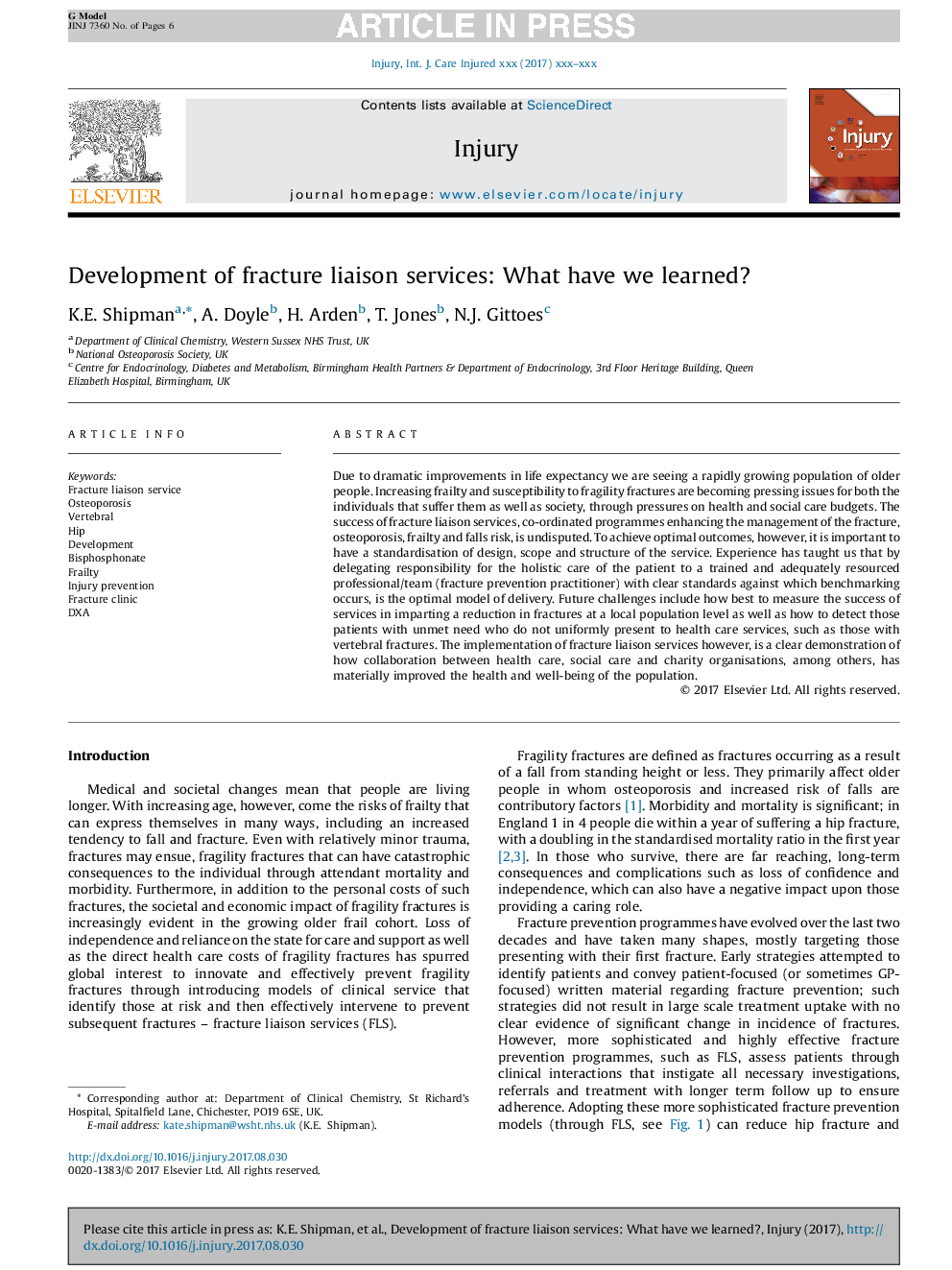| Article ID | Journal | Published Year | Pages | File Type |
|---|---|---|---|---|
| 8719053 | Injury | 2017 | 6 Pages |
Abstract
Due to dramatic improvements in life expectancy we are seeing a rapidly growing population of older people. Increasing frailty and susceptibility to fragility fractures are becoming pressing issues for both the individuals that suffer them as well as society, through pressures on health and social care budgets. The success of fracture liaison services, co-ordinated programmes enhancing the management of the fracture, osteoporosis, frailty and falls risk, is undisputed. To achieve optimal outcomes, however, it is important to have a standardisation of design, scope and structure of the service. Experience has taught us that by delegating responsibility for the holistic care of the patient to a trained and adequately resourced professional/team (fracture prevention practitioner) with clear standards against which benchmarking occurs, is the optimal model of delivery. Future challenges include how best to measure the success of services in imparting a reduction in fractures at a local population level as well as how to detect those patients with unmet need who do not uniformly present to health care services, such as those with vertebral fractures. The implementation of fracture liaison services however, is a clear demonstration of how collaboration between health care, social care and charity organisations, among others, has materially improved the health and well-being of the population.
Keywords
Related Topics
Health Sciences
Medicine and Dentistry
Emergency Medicine
Authors
Kate E. Shipman, Alison Doyle, Hilary Arden, Tim Jones, Neil J. Gittoes,
